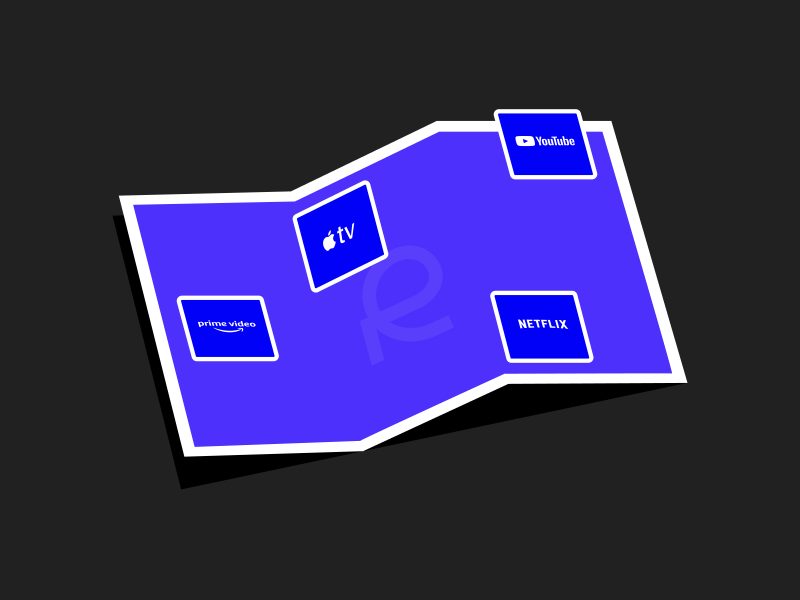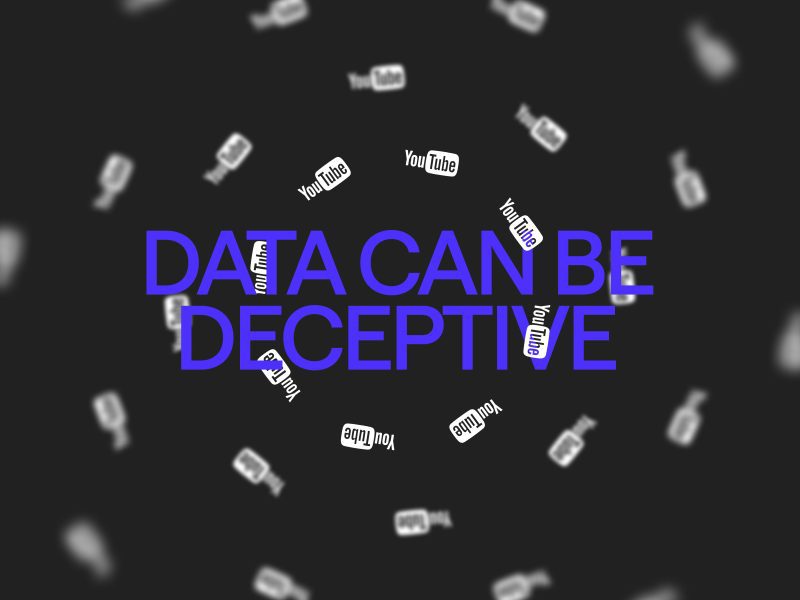The YouTube-ification of TV: How Digital-First Content is Reshaping the Entertainment Landscape

The line between traditional television and digital content platforms has never been blurrier. Once relegated to short, bite-sized content for mobile devices, YouTube has steadily evolved into a dominant force in living rooms worldwide.
04.23.2025
Today, YouTube is not only influencing the types of content being consumed, but also fundamentally changing how and where people engage with entertainment.
This shift is transforming the entertainment ecosystem in three significant ways: YouTube is now a dominant force on television screens, platforms like Amazon Prime Video are increasingly collaborating with YouTube creators, and streaming giants like Netflix are eyeing video podcasts to expand their content offerings. These changes are not a passing trend but rather a signal of a new era of entertainment consumption.
YouTube Has Taken Over the Living Room
Perhaps the clearest evidence of YouTube’s growing influence in the traditional TV space is the shift in viewing devices. According to recent data, over 1 billion hours of YouTube content is now watched on television screens daily. In the U.S., as of December 2024, TVs have surpassed mobile devices as the primary way people consume YouTube content. This is a fundamental shift that has not only changed consumer behavior but also opened the door for YouTube content to compete directly with traditional television programming.
YouTube has leaned into this shift by experimenting with new features designed to enhance the television viewing experience. One of the most notable is the “Watch With” feature, which allows creators to livestream themselves alongside major events, allowing audiences to watch content like sports games or awards shows alongside their favorite personalities. This type of communal, creator-led viewing experience is something traditional television has struggled to replicate, but one that resonates deeply with younger audiences.
The implications are clear: YouTube is no longer a platform for quick mobile entertainment. It is now a primary competitor to traditional television, both in terms of viewership and content style.
Major Streamers Are Partnering with YouTube Stars
The impact of YouTube’s cultural dominance has not gone unnoticed by major streaming platforms. In a landmark moment for both traditional entertainment and the creator economy, Amazon Prime Video’s collaboration with YouTube megastar MrBeast shattered expectations. Their unscripted series, which featured MrBeast’s signature high-stakes challenges, became Amazon Prime Video’s most-watched unscripted series – amassing over 50 million viewers in just 25 days.
This success highlights a critical shift in consumer preference. Audiences are increasingly drawn to personalities they’ve built deep parasocial relationships with, rather than the traditional celebrity-driven content model. MrBeast, who built his audience entirely on YouTube, brought a pre-existing fanbase that translated into massive success for Amazon Prime.
For media owners and content producers, this shift represents both a challenge and an opportunity. The traditional entertainment model has long relied on high-budget, scripted content with well-known actors to drive viewership. But now, platforms are discovering that YouTube creators can generate the same, if not greater, viewership with content that is often less expensive to produce and more directly aligned with audience demand.
Netflix is Betting on Video Podcasts
Another signal of this shift comes from Netflix’s recent pursuit of video podcasts – a format that has exploded in popularity thanks to YouTube. According to Business Insider, Netflix has begun exploring partnerships with prominent podcast hosts to produce talk-based video content, a departure from its traditional scripted programming.
The appeal is clear. YouTube has already proven that long-form conversational content, like podcasts, resonates deeply with audiences, particularly when consumed on television screens. In fact, YouTube reported that users watched over 400 million hours of podcast content on television sets each month in 2024.
Netflix’s strategy appears to be two-fold: either sign exclusive deals with major podcast talent to create original content for the platform or simply offer ad-free versions of popular YouTube-based podcasts. This latter approach mirrors the success of streaming platforms acquiring existing TV shows with built-in audiences — except in this case, the “show” is simply a podcast already thriving on YouTube.
The Implications for Media Owners and Content Producers
This shift toward YouTube-inspired content and consumption habits carries significant implications for media owners and content producers.
First, creators are becoming increasingly valuable to streaming platforms, and their influence may soon rival, if not surpass, that of traditional Hollywood stars. The success of MrBeast’s series on Amazon Prime is likely to inspire other platforms to aggressively pursue partnerships with YouTube creators, fundamentally reshaping what mainstream content looks like.
Second, the rapid adoption of YouTube content on television screens challenges the long-held assumption that premium entertainment must come from scripted, high-production-value shows. Increasingly, viewers are signaling that they value authenticity and relatability over polished production – something YouTube creators have perfected.
Finally, the rise of video podcasts as a viable form of entertainment further underscores how YouTube has redefined the meaning of television. As Netflix seeks to enter this space, it will need to reimagine its content pipeline and determine how to monetize content that originated outside of its platform.
The ‘YouTube-ification of TV’ is not a passing trend; it’s a reflection of changing audience preferences, technological shifts, and evolving content economics. For media owners and content producers, the question is no longer if YouTube’s influence will reshape television, it’s how quickly they can adapt to the new entertainment landscape.
Sources: forbes.com blog.youtube theguardian.com gizmodo.com



